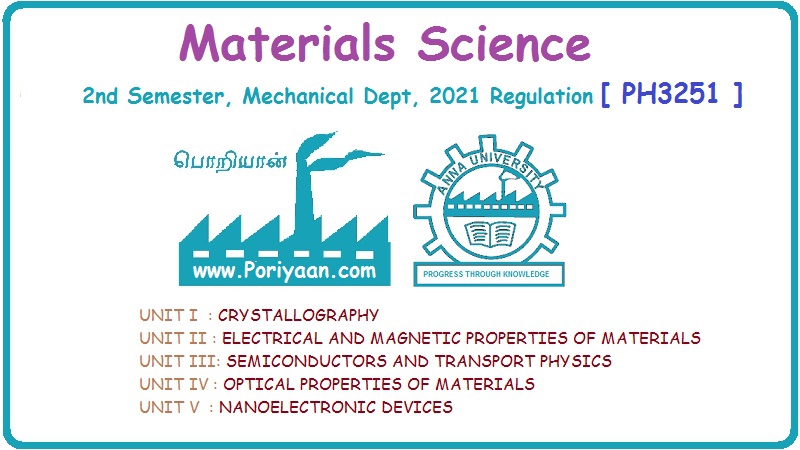Materials Science: Unit I: Crystallography
Line Defects or Dislocations
Types
The defects due to dislocation or distortion of atoms along a line are known as line defects. These defects are also called dislocations.
LINE DEFECTS OR DISLOCATIONS (One Dimensional Effect) The defects due to dislocation or distortion of atoms along a line are known as line defects. These defects are also called dislocations. In the geometrical sense, they are one dimensional defects. In line defect, a portion of a line of atoms is missing or displaced from its regular site. There are two types of line defects. (a) Edge dislocation and (b) Screw dislocation An edge dislocation arises when one of the atomic planes. forms only partially and does not extend through the entire crystal (fig. 1.35.) The atomic plane AB abruptly terminates at B. It is viewed as an extra plane inserted in between a set of parallel planes. The edge of such a plane forms a line defect and it is called an edge dislocation. The atomic row 1 passing through point B has one atom more than row 2 adjacent to it. Edge dislocations are symbolically represented by ⊥ or T depending on whether the incomplete plane starts from top or bottom of the crystal. These two configurations are referred as (a) Positive edge dislocation (b) Negative edge dislocation If the extra plane of atoms is above the slip plane of the crystal than the edge dislocation is called positive as shown in fig 1.36. It is denoted by the symbol ⊥. If the extra plane of atoms is below the slip plane than the edge dislocation is called negative. (fig. 1.36.) It is denoted by the symbol T. Screw dislocation is due to a displacement of atoms in one part of a crystal relative to rest of the crystal. The displacement terminates within crystal. This dislocation forms a spiral ramp around dislocation line (Fig. 1.37). In a screw dislocation, there is a line of atoms about which crystal planes are warped to give an effect similar to threads of a screw. The row of atoms marking the termination of the displacement is the screw dislocation. EF indicates the dislocation line. The term screw represents that one part of the crystal is moving in spiral manner about dislocation line. If spiral motion of one part of the crystal is in clockwise direction then, dislocation is right handed, on the other hand spiral motion is in anti-clockwise direction then, dislocation is left handed. Table 1.4Types of line defects
(a) Edge dislocation
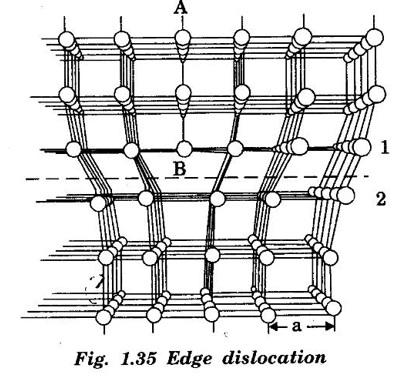
Classification of edge dislocation
(a) Positive edge dislocation
(b) Negative edge dislocation
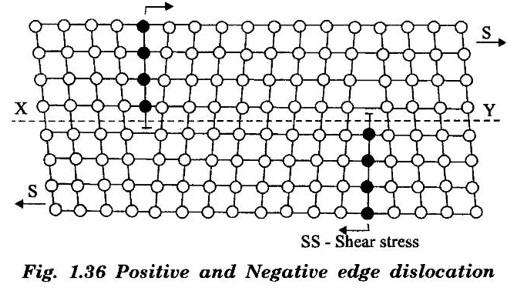
Screw dislocation
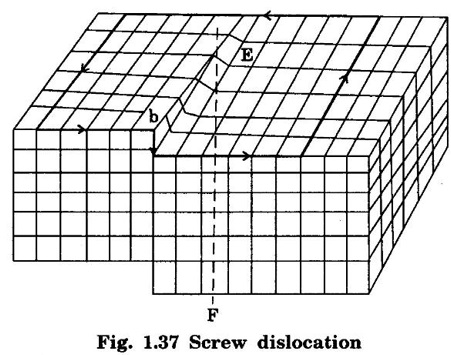
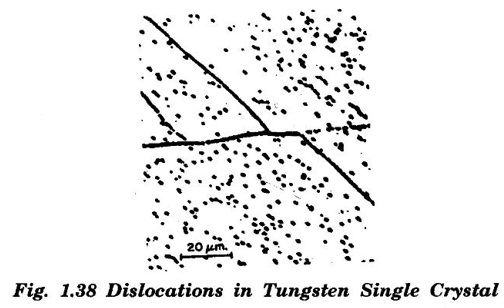
Differences between edge dislocation and screw dislocation
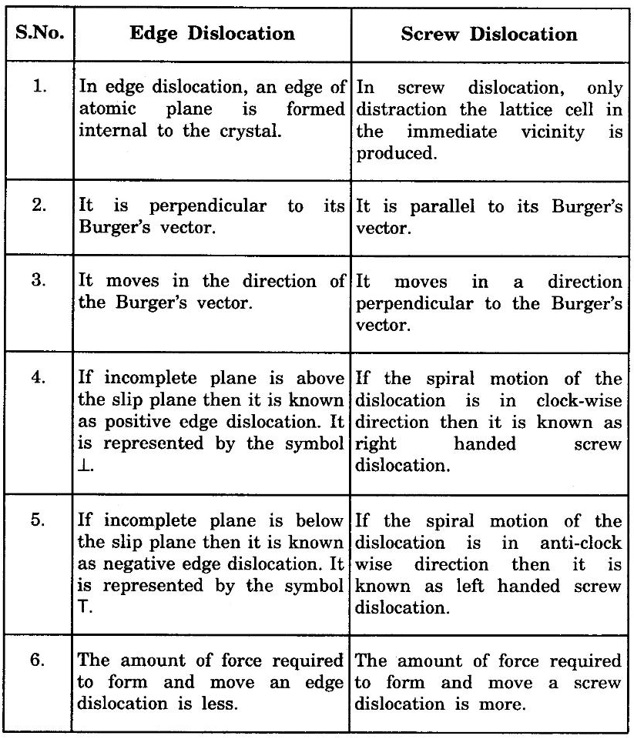
Materials Science: Unit I: Crystallography : Tag: : Types - Line Defects or Dislocations
Related Topics
Related Subjects
Materials Science
PH3251 2nd semester Mechanical Dept | 2021 Regulation | 2nd Semester Mechanical Dept 2021 Regulation
